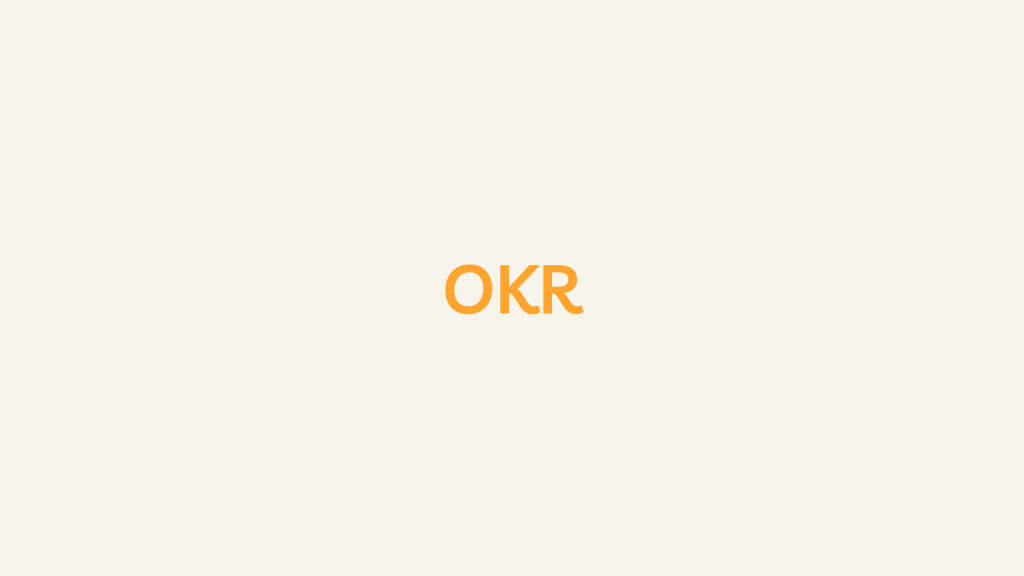What is OKR?
In organizational management and goal-setting, the OKR (Objectives and Key Results) framework has emerged as a powerful tool, transforming how companies articulate, pursue, and measure their objectives. Originating in Silicon Valley and gaining prominence through its adoption by industry giants like Google, the OKR framework represents a strategic and transparent approach to goal alignment and execution. Let’s delve deeper into the components, implementation, and benefits of the OKR framework.
Understanding OKR Objectives
1. Clear and Inspirational:
- Objectives in the OKR framework are not mundane tasks; they are visionary and inspiring goals that align with the organization’s mission and vision. They provide a sense of purpose and direction.
2. Limited in Number:
- OKRs advocate for a limited number of high-level objectives to maintain focus and avoid diluting efforts. This strategic limitation ensures that teams prioritize the most impactful goals.
3. Time-Bound:
- Objectives are set for a specific time period, usually a quarter or a year. This time-bound nature adds urgency, facilitates effective planning, and enables organizations to evaluate their progress within defined intervals.
Exploring OKR Key Results
1. Measurable and Specific:
- Key Results (KRs) are the quantifiable and specific outcomes that indicate progress toward achieving the corresponding objective. They serve as tangible indicators of success.
2. Achievable Yet Challenging:
- KRs should strike a balance between being achievable and challenging. When accomplished, they are the milestones contributing significantly to fulfilling the overarching objective.
3. Trackable Progress:
- The success of the OKR framework lies in its ability to facilitate progress tracking. KRs should be structured to allow teams to easily measure and assess their advancement.
OKR Implementation and Execution
1. Transparency:
- A hallmark of the OKR framework is transparency. Objectives and Key Results are visible to the entire organization, fostering a shared understanding of priorities and creating alignment at all levels.
2. Alignment at All Levels:
- OKRs cascade down through the organizational hierarchy, from company-level objectives to departmental goals, team objectives, and individual contributions. This alignment ensures a cohesive and unified focus.
3. Frequent Check-ins:
- Regular check-ins are a critical aspect of the OKR methodology. Teams and individuals meet frequently to review progress, discuss challenges, and make real-time adjustments to their strategies.
4. Learning and Adaptation:
- The OKR framework embraces a culture of continuous learning and adaptation. If objectives are not being met, teams are encouraged to reassess and modify their approaches to overcome obstacles and enhance performance.
Benefits of OKRs
1. Focus and Prioritization:
- OKRs guide organizations in concentrating their efforts on a select set of high-impact objectives, promoting focus and strategic prioritization.
2. Alignment:
- The framework ensures that all teams and individuals are aligned with the organization’s broader strategic goals, fostering a sense of unity and shared purpose.
3. Measurable Progress:
- OKRs provide a clear and measurable way to track progress, allowing for data-driven decision-making and facilitating performance assessments.
4. Accountability:
- Teams and individuals are held accountable for achieving their objectives, promoting a culture of ownership and responsibility throughout the organization.
5. Agility:
- In a rapidly evolving business landscape, OKRs enable organizations to be agile and adaptive. They provide the flexibility needed to respond quickly to changing circumstances and priorities.
Conclusion
The success stories of companies like Google, Intel, and others underscore the transformative impact of the OKR framework. Its simplicity, coupled with its effectiveness in fostering goal alignment and execution, makes it a valuable tool for organizations of various sizes and industries. By embracing the OKR methodology, companies can unlock a pathway to sustained success, innovation, and resilience.
